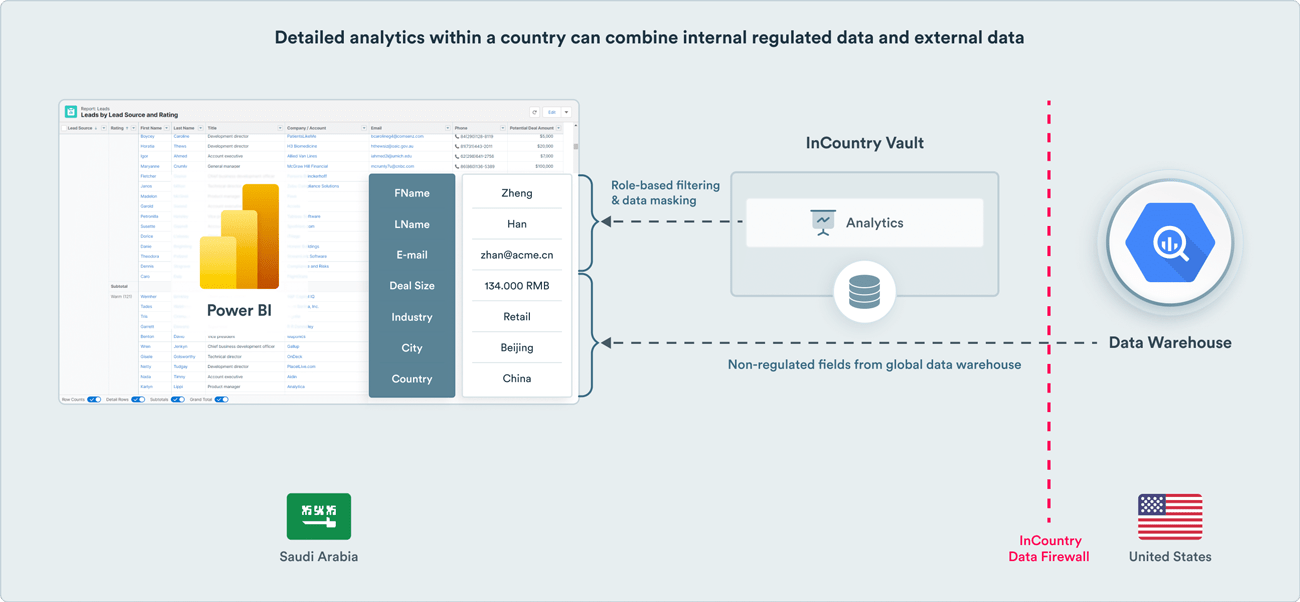

Data Residency for Google BigQuery
Redact and anonymize regulated data from Google BigQuery

Continue to consolidate worldwide data and maintain local compliance
Isolate regulated data from Google BigQuery with full redaction and anonymization before data loading. Continue to gain global insights and perform local analytics by combining local regulated data with global data.
Google BigQuery with InCountry
InCountry seamlessly integrates with ETL data loading processes, offering effortless incorporation into existing workflows. Python scripts simplify the process by connecting with InCountry’s local servers in each country to redact regulated fields and substitute them with anonymized values. Regulated data can be securely managed within InCountry’s infrastructure to enable local analytics, merging localized regulated data with global datasets.
- Dynamic redaction of regulated fields
- Flexible anonymization methods such as tokenization, hashing, and masking algorithms
- Comprehensive audit log for tracking data modifications

Support both local and global analytics and applications
- Global business intelligence and reporting tools continue to operate with regulated data fully masked
- Local users can create dashboards and reports using both local regulated data and data from global warehouses and data lakes
- Define granular access policies for groups of users and applications with query filters, field-level access controls, field masks, and CRUD controls

InCountry Data Residency for Google BigQuery
Features
- Direct integration with ETL
- No changes to pipelines or workflows
- Flexible tokenization, hashing, and masking algorithms
Benefits
- Compliance with cross-border data transfer regulations
- Descope ETL and Google BigQuery from regulated data processing
- Fast setup and time-to-market
How it Works
Identify ETL files processes with regulated data that crosses borders
Use Python script in the country that calls the InCountry REST API to redact and anonymize regulated data
Continue to use ETL
Perform local analytics by combining local regulated data with global data
